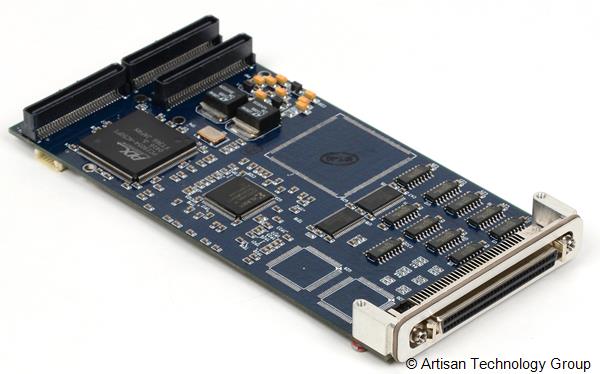A Front End Processor (FEP) is a specialized computer or subsystem that acts as an intermediary between a mainframe computer or central server and external devices, such as terminals, networks, or other computers.
A Front End Processor (FEP) is a specialized computer that manages communication between a host computer and connected devices, handling data transfer, protocol conversion, and network interfacing efficiently.
This article explores the functions, architecture, applications, and significance of Front End Processors in modern computing, particularly for a U.S.-based audience familiar with enterprise IT systems and networking.
Historical Context and Evolution
The concept of the Front End Processor emerged in the 1960s and 1970s during the era of mainframe computing. Mainframes, like IBM’s System/360, were powerful but expensive, and their processing capabilities were often bottlenecked by I/O operations. To address this, companies developed FEPs as dedicated systems to handle communication tasks. For example, IBM’s 3705 Communications Controller was a widely used FEP that managed terminal connections and data transfers for mainframe systems.
Over time, as computing evolved from mainframes to distributed systems and cloud architectures, the role of FEPs adapted. While traditional FEPs were hardware-based, modern equivalents often exist as software or virtualized components within network appliances, routers, or servers. Today, FEPs are integral to industries like banking, telecommunications, and e-commerce, where high-speed, reliable data processing is critical.
Core Functions of a Front End Processor

A Front End Processor performs several key functions to streamline communication between a central system and external entities. These include:
- Data Communication Management: FEPs handle incoming and outgoing data streams, ensuring efficient transfer between the main system and external devices. They manage protocols like TCP/IP, SNA (Systems Network Architecture), or X.25, ensuring compatibility across diverse networks.
- Protocol Conversion: FEPs translate data formats and protocols to enable communication between heterogeneous systems. For instance, an FEP might convert data from a legacy terminal protocol to a modern IP-based format.
- Error Detection and Correction: FEPs monitor data integrity, detecting and correcting errors during transmission. This ensures reliable communication, especially in high-stakes environments like financial transactions.
- Buffering and Queuing: By temporarily storing data in buffers, FEPs manage traffic spikes and prevent system overloads. They prioritize and queue data to optimize processing.
- Security and Access Control: FEPs often implement authentication and encryption to secure data transmissions, protecting sensitive information from unauthorized access.
- Load Balancing: In distributed systems, FEPs distribute workloads across multiple servers or processors, improving performance and preventing bottlenecks.
These functions make FEPs critical for organizations that rely on real-time data processing and high availability.
Architecture of a Front End Processor
A typical FEP consists of both hardware and software components designed for high-speed communication. The architecture includes:
- Central Processing Unit (CPU): A dedicated processor executes communication tasks, such as protocol handling and data routing.
- Memory: Buffers and cache store incoming and outgoing data temporarily to manage traffic flow.
- I/O Interfaces: Ports and adapters connect the FEP to external devices, networks, or terminals.
- Operating System: A lightweight, real-time OS optimizes the FEP for speed and reliability.
- Firmware and Software: Custom software handles protocol conversion, error checking, and security functions.
In modern systems, FEPs may be integrated into network interface cards (NICs), routers, or virtual machines, reducing the need for standalone hardware. For example, a cloud-based FEP might run as a virtual appliance within a data center, managing API requests and responses.
Applications of Front End Processors
Front End Processors are used across various industries in the U.S., particularly in sectors requiring robust data communication. Key applications include:
- Banking and Financial Services: FEPs manage transactions between ATMs, point-of-sale (POS) terminals, and core banking systems. For instance, when a customer withdraws cash from an ATM, the FEP processes the request, verifies the transaction, and communicates with the bank’s mainframe.
- Telecommunications: FEPs handle call routing, signaling, and data transfer in telecom networks. They ensure seamless communication between mobile devices, base stations, and central servers.
- E-Commerce: Online retailers use FEPs to process customer requests, manage inventory updates, and handle payment gateways. FEPs ensure fast, secure transactions during peak shopping periods like Black Friday.
- Healthcare: In hospitals, FEPs connect medical devices, electronic health record (EHR) systems, and billing platforms, ensuring accurate and timely data exchange.
- Government and Defense: FEPs support secure communication in military and government networks, handling encrypted data and mission-critical operations.
These applications highlight the versatility of FEPs in managing complex, high-volume data flows.
Advantages of Using Front End Processors
Implementing an FEP offers several benefits, particularly for U.S. enterprises aiming to optimize IT infrastructure:
- Improved System Efficiency: By offloading I/O tasks, FEPs free up the main processor for critical computations, reducing latency and improving throughput.
- Scalability: FEPs enable systems to handle increased traffic and device connections without requiring costly mainframe upgrades.
- Reliability: Error detection and correction mechanisms ensure consistent data integrity, critical for industries like finance and healthcare.
- Cost Savings: By optimizing resource utilization, FEPs reduce the need for additional hardware, lowering operational costs.
- Enhanced Security: Built-in encryption and authentication protect sensitive data, aligning with U.S. regulations like HIPAA and PCI-DSS.
Challenges and Limitations
Despite their advantages, FEPs have some limitations:
- Complexity: Designing and maintaining an FEP requires specialized expertise, which can be costly for smaller organizations.
- Obsolescence: Legacy FEPs may struggle to support modern protocols or cloud-based architectures, requiring upgrades or replacements.
- Single Point of Failure: If an FEP malfunctions, it can disrupt communication between the main system and external devices, impacting operations.
- Cost: While FEPs reduce mainframe costs, their initial setup and maintenance can be expensive, particularly for hardware-based systems.
Organizations must weigh these challenges against the benefits when integrating FEPs into their IT ecosystems.
Modern Trends and Innovations

As technology evolves, so do Front End Processors. Key trends shaping their development include:
- Virtualization: Virtual FEPs, running on cloud platforms like AWS or Azure, offer flexibility and scalability compared to traditional hardware.
- Software-Defined Networking (SDN): FEPs are increasingly integrated into SDN architectures, enabling dynamic traffic management and protocol handling.
- Artificial Intelligence: AI-powered FEPs can predict traffic patterns, optimize load balancing, and detect anomalies in real time.
- Edge Computing: In IoT and 5G networks, FEPs are deployed at the network edge to process data closer to its source, reducing latency.
- Cybersecurity Enhancements: Modern FEPs incorporate advanced encryption and threat detection to combat evolving cyber threats.
These innovations ensure that FEPs remain relevant in the era of cloud computing, IoT, and big data.
Case Study: FEP in U.S. Banking
To illustrate the impact of FEPs, consider a major U.S. bank like JPMorgan Chase. The bank processes millions of transactions daily across ATMs, online banking platforms, and POS terminals. An FEP, such as IBM’s zSeries Front End Processor, manages these transactions by:
- Authenticating user requests via secure protocols.
- Routing transaction data to the mainframe for processing.
- Buffering requests during peak hours to prevent system overload.
- Ensuring compliance with PCI-DSS standards through encryption.
By using an FEP, the bank achieves faster transaction processing, improved customer experience, and reduced strain on its core systems.
FAQs
What does a front-end processor do?
A front-end processor manages data communication, protocol conversion, error correction, and load balancing, offloading tasks from the main system for efficiency.
What is front end with an example?
A front end handles data exchange between systems and devices. Example: An ATM’s processor routes transaction requests to the bank’s mainframe.
What is a front end processor usually used in?
Front-end processors are used in banking, telecom, e-commerce, healthcare, and government for managing high-volume data transfers and network communication.
What is a front-end PC?
A front-end PC is a computer acting as an intermediary, processing data inputs/outputs between user devices and a central server.
Why do we need front end?
Front-end processors improve system efficiency, scalability, and security by managing data traffic, reducing main system load, and ensuring reliable communication.
What type of processor is best?
The best processor depends on workload. For front-end tasks, high-speed, multi-core processors with strong I/O capabilities are ideal.
Do I need a fast processor?
Yes, a fast processor ensures quick data handling, reduces latency, and supports high-volume transactions in front-end processing tasks.
What is the difference between front end and back-end processing?
Front-end processing manages data communication and I/O; back-end processing handles core computations, data storage, and application logic.
Conclusion
Front End Processors play a vital role in modern computing by managing communication between central systems and external devices. Their ability to handle data I/O, protocol conversion, and security makes them indispensable in industries like banking, telecommunications, and e-commerce. While challenges like complexity and cost exist, the benefits of improved efficiency, scalability, and reliability outweigh these drawbacks for most organizations. As technology advances, FEPs are evolving through virtualization, AI, and edge computing, ensuring their continued relevance in the U.S. and beyond. For enterprises seeking to optimize IT performance, understanding and leveraging FEPs is essential.











